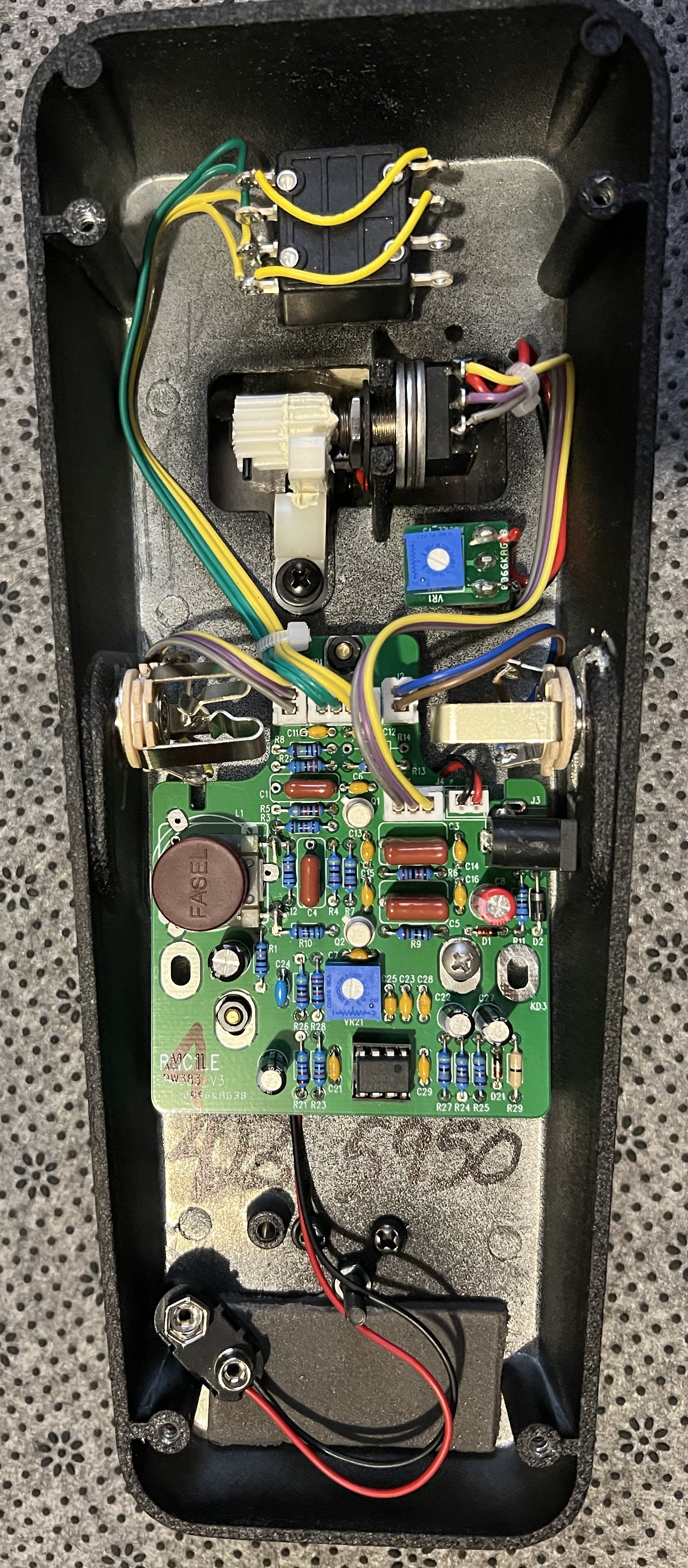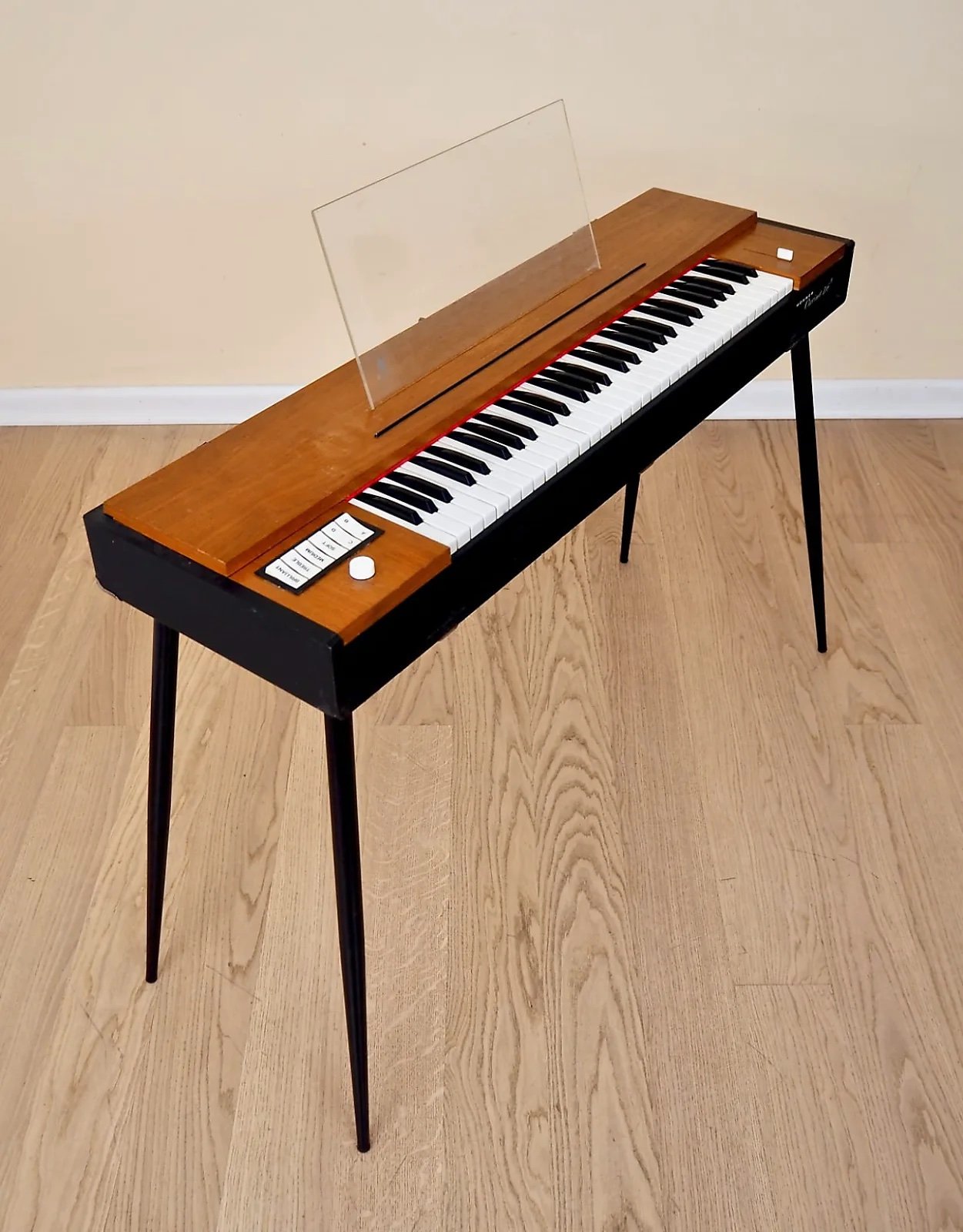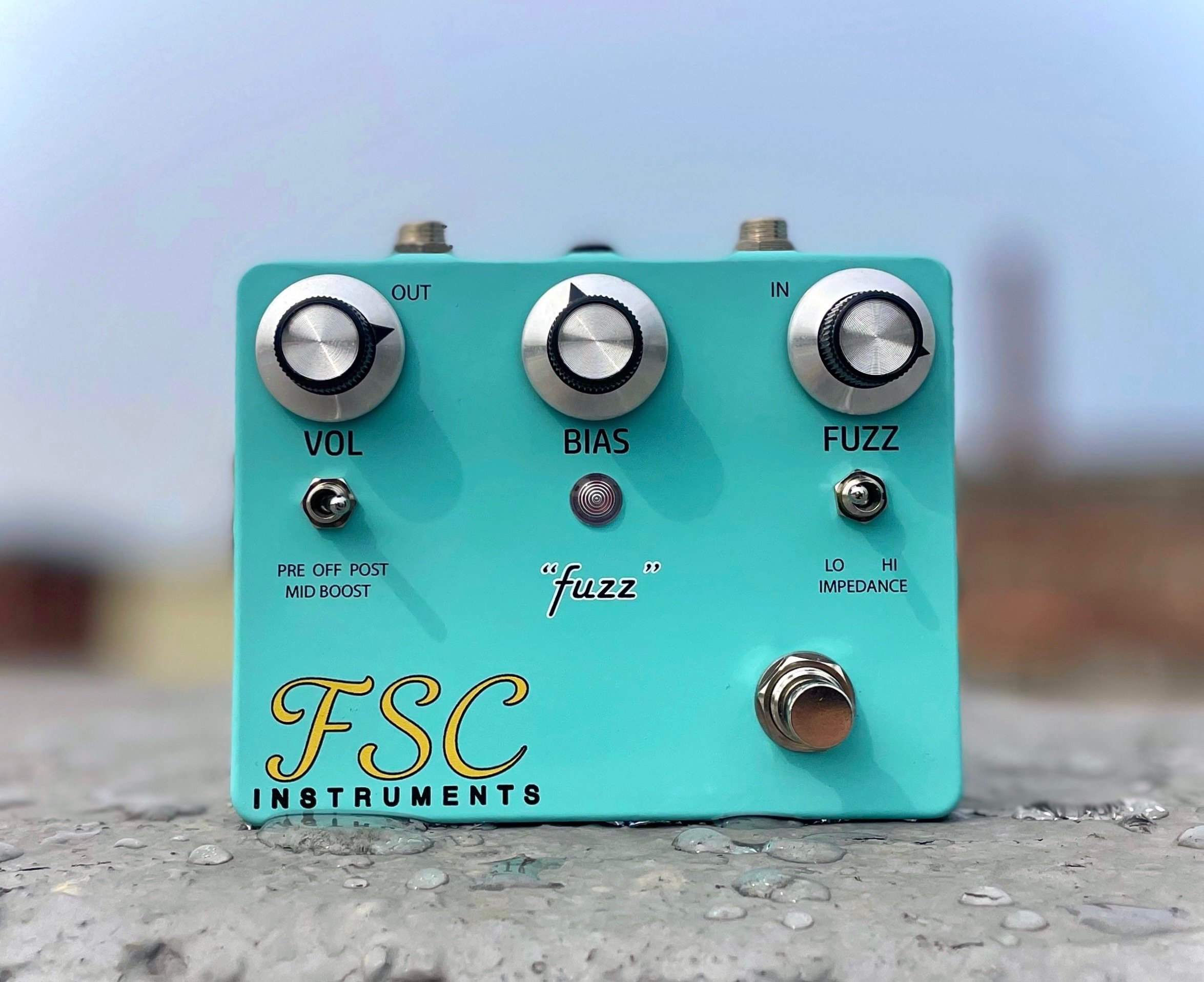Teese RMC Picture Wah
Regarding guitar effects pedals, the wah-wah pedal stands out as one of the most widely recognized and iconic. Even those unfamiliar with guitars can often identify this distinctive effect, a rarity among effects pedals.
One of the reasons for its widespread recognition is that the wah-wah pedal was among the earliest effects explicitly manufactured for guitars.
The wah-wah pedal dominated the guitar effects scene alongside tremolo and fuzz until the 1970s.
The wah-wah pedal's influence can be heard on countless records by renowned artists such as the Beatles, Jimi Hendrix, Cream, and many others, including prominent funk musicians.
At first glance, the design of a wah-wah pedal may appear deceptively simple. However, as is often the case in life, things are only sometimes as they seem.
There was a certain magic in the early years of the wah-wah pedal, perhaps due to our emotional attachment to the captivating sounds found on classic records from the 1960s and 1970s.
The Search
For years, many of us have embarked on a quest to recreate elusive tones, and among them, the wah-wah effect has proven particularly challenging. One of the contributing factors to this challenge is the production variations that existed during those formative years. For example, the Thomas Organ Company, often regarded as the epitome of wah tone, produced wah-wah pedals in Italy and America, each incorporating different components even though they were the same circuit design.
If one were to purchase an American model of a vintage Thomas Wah, it would sound different from its Italian counterpart, which is often considered the ultimate dream wah. Unfortunately, this was not widely known for a significant period.
RMC
However, everything changed when Geoffrey Teese owner and designer at Real Mccoy Custom undertook extensive research that ultimately enabled him to recreate the Italian Thomas Organ Original McCoy wah-wah faithfully. This was no simple task; it involved much more than merely reverse engineering an old wah (which, in itself, is a complex endeavor). It required delving into profound inquiries and thorough investigations to uncover the answers.
Geoffrey established connections with the original engineer for the Clyde McCoy wah and others associated with manufacturing the Thomas Organ wahs. His efforts brought him as close as anyone could have ever imagined in uncovering the secrets that made the 1967 Clyde Mccoy Picture wah so special.
Geoffrey delved deep into his pursuit. He didn't embark on the journey of creating wah pedals on a mere whim. As a guitarist, he was genuinely curious to unravel the secrets behind the captivating sounds produced by the Italian-made Thomas Organ Picture Wah. And we are incredibly fortunate that he did.
When you plug in the Teese Picture Wah, its profound knowledge and craftsmanship become immediately evident. There's instant gratification that comes with the Teese Picture Wah.
I brought the Picture Wah along during a recent Silver Tooth Cactus band rehearsal and shared my excitement about it.
Trial by ear
You know how band members can be when you introduce a new pedal – their eyes tend to glaze over after about a minute. However, as soon as I started playing it, the bassist couldn't help but exclaim, "Wow, that truly is an amazing-sounding wah."
Many people don't expect to hear a noticeable difference when they plug in a new pedal. Some are convinced that only the player can truly perceive it. I know that's not true when achieving great tone, but that's the impression some hold. However, with the Picture Wah, there was no denying its immediate impact.
“with the Picture Wah, there was no denying its immediate impact.”
I only have this experience with some pedals I've tried. However, some builders like Analog Man, Effectrode, and Teese possess such depth of knowledge and refined taste that you immediately feel the buzz from their tones.
By Comparrison
Now, I'm not saying that all other wah-wahs are inferior. I've used many, and the Dunlop wahs, for instance, are solid performers. However, I wouldn't describe their tone as sweet; it leans towards being somewhat generic. I don't mean to belittle them by saying that. They are priced within a range that only some can afford, and they will undoubtedly get the job done. You shouldn't feel bad about using them if that's all you can afford.
Inside the RMC Picture Wah
But, if you're a true connoisseur of tone, you've probably felt like I do about Dunlop wahs. They can be noisy, susceptible to picking up radio signals, and often interact poorly with vintage-style fuzz pedals. Additionally, there's something unappealing about the EQ curve to my ears. There is an undefined buildup in the 700Hz range.
I've also tried Vox wahs and various custom-built wahs. Some wah-wahs felt overly sharp and required a compressor afterward, while others had sweep ranges that didn't sound right.
I've experimented with aluminum pedals and mini wahs, and even tried wah pedals without pots like the Morley, which was my least favorite.
Occasionally, a wah would sound better with single-coil pickups or humbuckers or when paired with certain amplifiers.
The point is, I haven't plugged in a wah and felt like it was perfect right out of the box. I always thought they needed some adjustments or enhancements.
However, within a minute of playing the Teese Picture Wah, I knew I had found "the" wah I had been searching for.
Snapshots
I've discussed this before, but one interesting aspect of recreating vintage circuits is the particular circuit snapshot the designer chooses to capture. I'm not referring to simply taking a snapshot of the factory schematic but instead capturing the essence of an actual unit found in the wild.
Sometimes, deviations from the schematic occurred during production, and these variations led to moments of magic that made a unit uniquely special, despite not being entirely authentic to the original plan. The best builders possess extensive experience with various specimens of the models they aim to recreate.
Radio Radio
One common issue encountered by guitarists and bassists is the sudden transformation of their wah-wah into a beacon for a radio station, resulting in unwanted interference. I used to rehearse near the Empire State Building in NYC, which has a radio tower on it. Every time I attempted to use a wah in that room, I would experience interference.
Fortunately, Teese has ingeniously tackled this problem by incorporating passive filter circuitry, effectively eliminating RFI and EMI interference.
Many of us who use wah pedals have learned to accept noise as part of the experience. However, imagine my delight when I discovered how remarkably quiet the Teese Picture Wah is. In modern times, noise has become an even more significant challenge, with numerous devices causing interference. Using a pedal that doesn't contribute to the noise floor brings me a sense of relief.
Toggle
The Picture wah-wah has a toggle switch under the foot rocker to adjust the pot's taper and a faster sweep with less low-end resonance. I appreciate that it is easily accessible for adjustments yet remains out of reach to prevent accidental changes.
The Weight
Weight is another aspect to consider. I once attempted to use a wah housed in an aluminum casing to lighten my gig load. However, the aluminum case deteriorated, and I never entirely adapted to the feel. Lightweight wah pedals don't provide the same tactile satisfaction. The weight of a regular wah feels more comfortable and facilitates expressiveness.
I also experimented with mini wah and mini volume pedals in my quest for weight reduction. However, I found their feel underfoot unsatisfying, and the reduced throw range left me feeling limited in expression. While some may only use a wah for a single song during a gig and may not prioritize playability or sound, those who heavily rely on wah for expressive playing appreciate these seemingly minor details.
Friend of Fuzz
As a fan of vintage fuzz circuits like the Maestro FZ-1A, Tonebender MKI, Tonebender MKII, and Fuzz Face germanium, I've encountered their finicky nature regarding what precedes them in the signal chain. Vintage germanium fuzz circuits typically prefer a direct connection with a guitar's pickups, reacting to their specific characteristics.
Introducing a buffered pedal or any other pedal before the fuzz often unfavorably alters the sound and inhibits dynamic interaction with the guitar's volume knob.
Geoffrey Teese understood the desire of guitarists to use a wah before a fuzz, which led him to incorporate the PRECISION FWR-Metal film resistors—fuzz-friendly, using the integrated FOXROX ELECTRONICS FWR circuit.
Teese also offers other fuzz-friendly options, along with a non-friendly fuzz option (although why anyone would want that is beyond me). Geoffrey has shared that the Precision FWR is the best fuzz-friendly modification.
I couldn't wait to connect my Teese Picture Wah to my Analog Man Germanium Sun Face fuzz. I had never been able to use a wah before it successfully. The aluminum custom wah and the 1991 Dunlop wah I owned didn't work well and sounded dreadful with the Sun Face.
However, the Picture Wah was a revelation when paired with the Sun Face (and other vintage fuzz pedals). The tone was lush, and I could still roll back my guitar's volume to clean up the fuzz. It was a game-changer!
Even if you're not currently using fuzz, I recommend opting for the fuzz-friendly version. Let's be honest – if you're a guitarist, bassist, or keyboardist, you're bound to acquire more pedals in the future. You can try to deny it, but let's be real.
Battery
Vintage circuits often exhibit better performance with lower-power batteries than alkaline ones. This is why many true vintage circuits solely rely on battery power. However, Geoffrey has designed his Wahs to regulate or sag the power to the optimal setting, accommodating both batteries and 9V DC power.
You can achieve the vintage low-power battery sound using modern means such as alkaline batteries or 9V DC. Players often associate alkaline batteries with a harsher tone due to their higher output power. Geoffrey Teese has successfully captured the vintage Thomas Organ wah tone while addressing some of the issues associated with wah pedals without compromising the tone.
Small Market
The wah-wah market is less saturated than the overdrive and other stomp effects markets. It is a smaller community where the quality range generally falls in the middle, meaning few companies produce terrible wah pedals.
“ the fuzz flexibility, RF filter, lower noise, and regulated power are compelling reasons to choose the Picture Wah. And, as a bonus, it sounds incredible!”
While many wahs can suffice if you're not overly particular, only one blew me away out of all the wahs I've tried. Even if we weren't discussing tone, the fuzz flexibility, RF filter, lower noise, and regulated power are compelling reasons to choose the Picture Wah. And, as a bonus, it sounds incredible!
As mentioned earlier, my least favorite wah pedal I've tried is the Morley potless wah. I returned it within a few days. Potless wahs and wah emulations found in multi-effects units aren't my jam. I understand the desire to avoid a pot that can get dirty, but honestly, the tone is rather lackluster if you genuinely love classic wah sounds.
Speaking of dirty pots, Teese wahs come with sealed pots so you don’t have to worry about cleaning them or getting dirty. I have ecountered numerous problems with other wahs where the pots get dirty and scratchy. Yet another elimination of conflict RMC offers.
Clavinet
I adore the combination of wah-wah, overdrive/fuzz, and clavinet. It's the quintessential sound of funk and the heist genre! It's becoming increasingly rare to witness anyone playing a real analog clavinet. Most players rely on a Nord Stage or software plugins like Keyscape or Arturia in the studio. One way to enhance the sound of a Nord or plugin clavinet is to use a genuine wah pedal instead of an emulated one.
Whenever I record clavinet with plugins, I always use real overdrive/fuzz and an actual wah pedal. Sometimes I even run it through a guitar amp and mic it up. And the Teese Picture Wah truly brings out the funkiness.
History
Teese has a dedicated page on his website that delves into his history. Reading it provides a glimpse into his meticulous attention to detail and unwavering commitment to high quality since he started in 1994. This was during the early days of boutique pedals when only a handful of builders existed.
Making wah-wah pedals is undoubtedly a labor of love and a family affair for Teese. Geoffrey's wife, Stephanie, played an integral role in the team until her untimely passing, and now RMC is run solely by Geoffrey.
There's something special about acquiring gear made by a dedicated individual. While there are pedal makers out there who may appear boutique but have larger companies producing their pedals, I'm not trying to criticize them or suggest that their pedals may not sound good.
However, I must say there is a discernible difference when you acquire a pedal made by a specialist with a small team – someone who is a focused expert in an area such as wah-wah. You can truly feel and hear the difference.
Examples
Ex1: Fender Stratocaster with FSC ‘59 pickups into the RMC Picture wah into a Victoria 35115
Ex2: Fender Stratocaster with FSC ‘59 pickups into the RMC Picture wah into an Analog Man Surface Germanium into a Victoria 35115
Ex3: Fender Telecaster with Voodoo ‘52 pickups into the RMC Picture Wah into a Headstrong Lil’ King reverb
Ex4: A Les Paul Standard with Voodoo ‘59 Humbuckers into the RMC Picture Wah into a Marshall SV20H Plexi
Ex5: A 335 with Voodoo ‘59 Pickups into a Vick Audio ‘73 Rams Head into the RMC Picture wah into a Vox AC15. I’m placing the Rams Head before the Wah.
Ex6: A 335 with Voodoo ‘59 Pickups into a Vick Audio Rams Head into the RMC Picture wah into a Vox AC15. Again, the Rams Head is before the wah-wah.
Ex7: A Danelecro DC59 with Gemini Lipstick pickups into the RMC Picture wah into a Vox AC15
Ex8: Fender Bas VI into the RMC Picture wah into an Analog Man Surface BC108 into an Ampeg V78
Ex9: Warwick FNA with active pickups into the RMC Picture wah into an API 312 mic pre into a Purple Audio MC77 compressor.
Ex10: A Clavinet via a Yamaha Reface CP into the RMC Picture Wah into an Effectrode Tube Drive
Ex11: A Wurlitzer via via a Yamaha Reface CP into the RMC Picture wah into an Analog Man ARDX20
Ex12: An Arp 2600M into the RMC Picture wah into an Analog Man ARDX20
I used an Ampete 88S amp switcher to switch between various amps.













